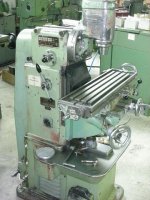I must have read old instructions for the rear seal. I thought they still needed part of the scroll cut off first. I was planning on using the new rear main seal. It seems the simplest.
As to why I would do the work on my lathe, I have a lathe, I just want to learn how to use it and what to use it on.
Jerry
As to why I would do the work on my lathe, I have a lathe, I just want to learn how to use it and what to use it on.
Jerry

 Hi Guest!
Hi Guest!

 smilie in place of the real @
smilie in place of the real @
 Pretty Please - add it to our Events forum(s) and add to the calendar! >>
Pretty Please - add it to our Events forum(s) and add to the calendar! >> 



